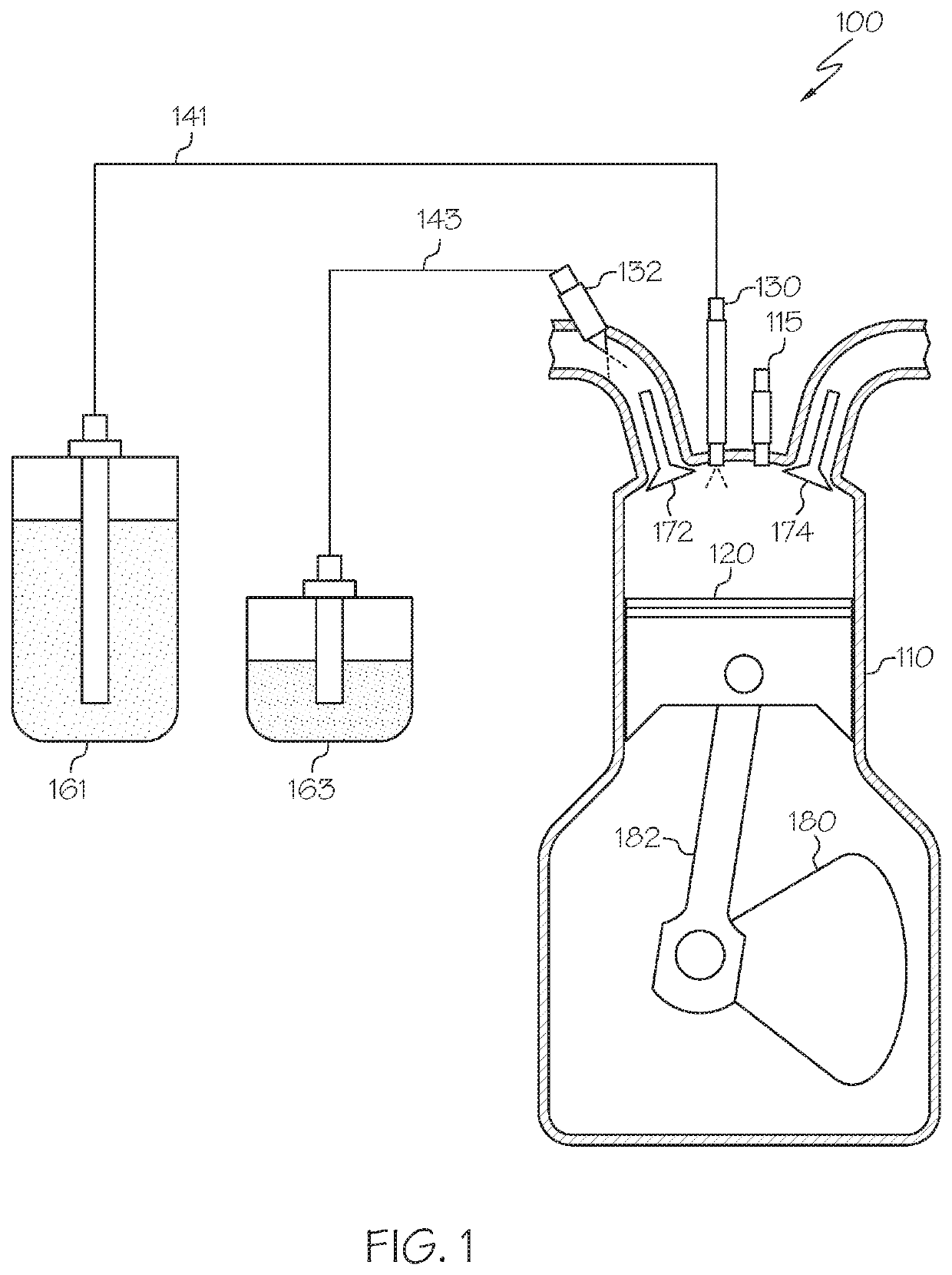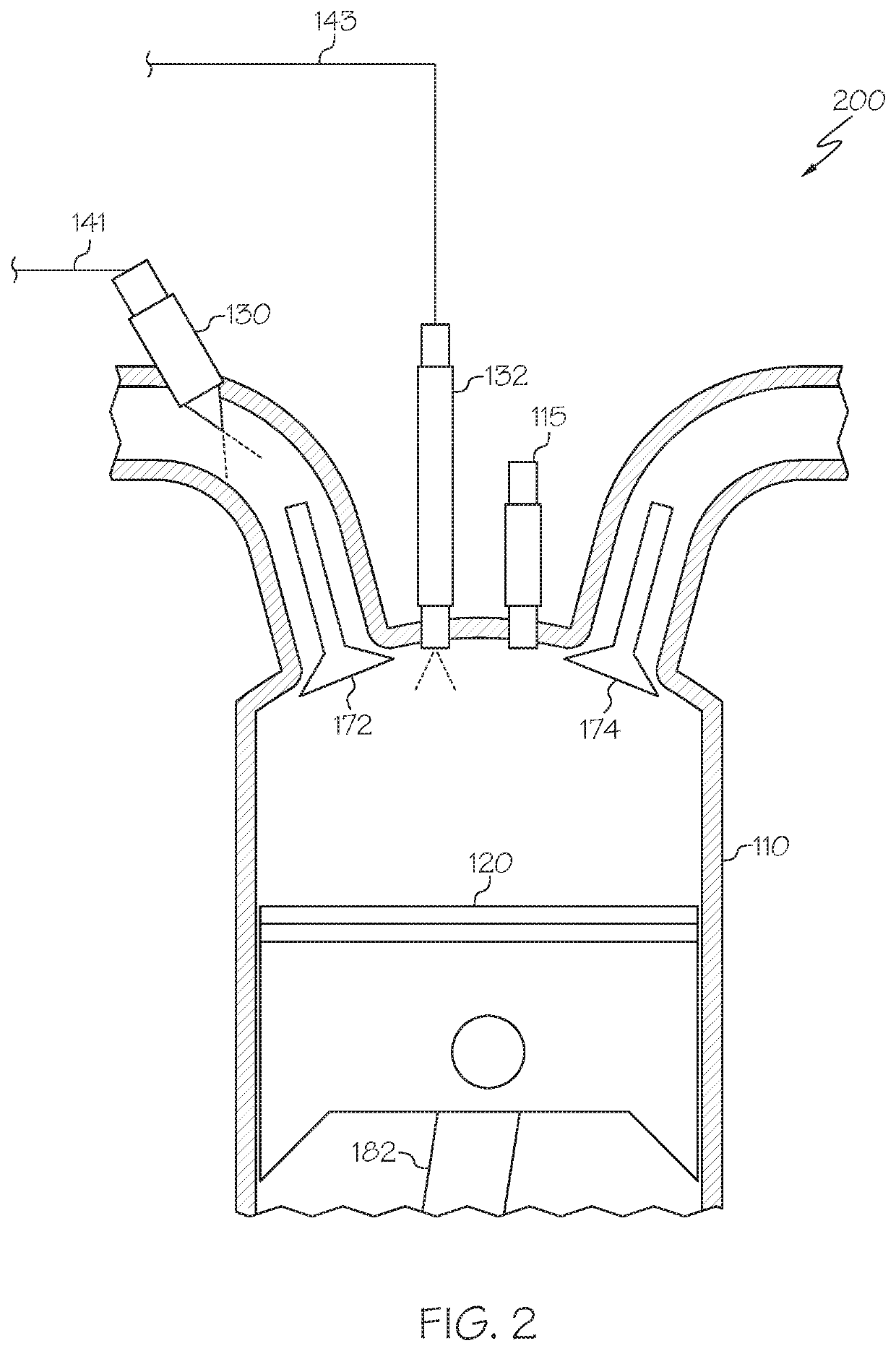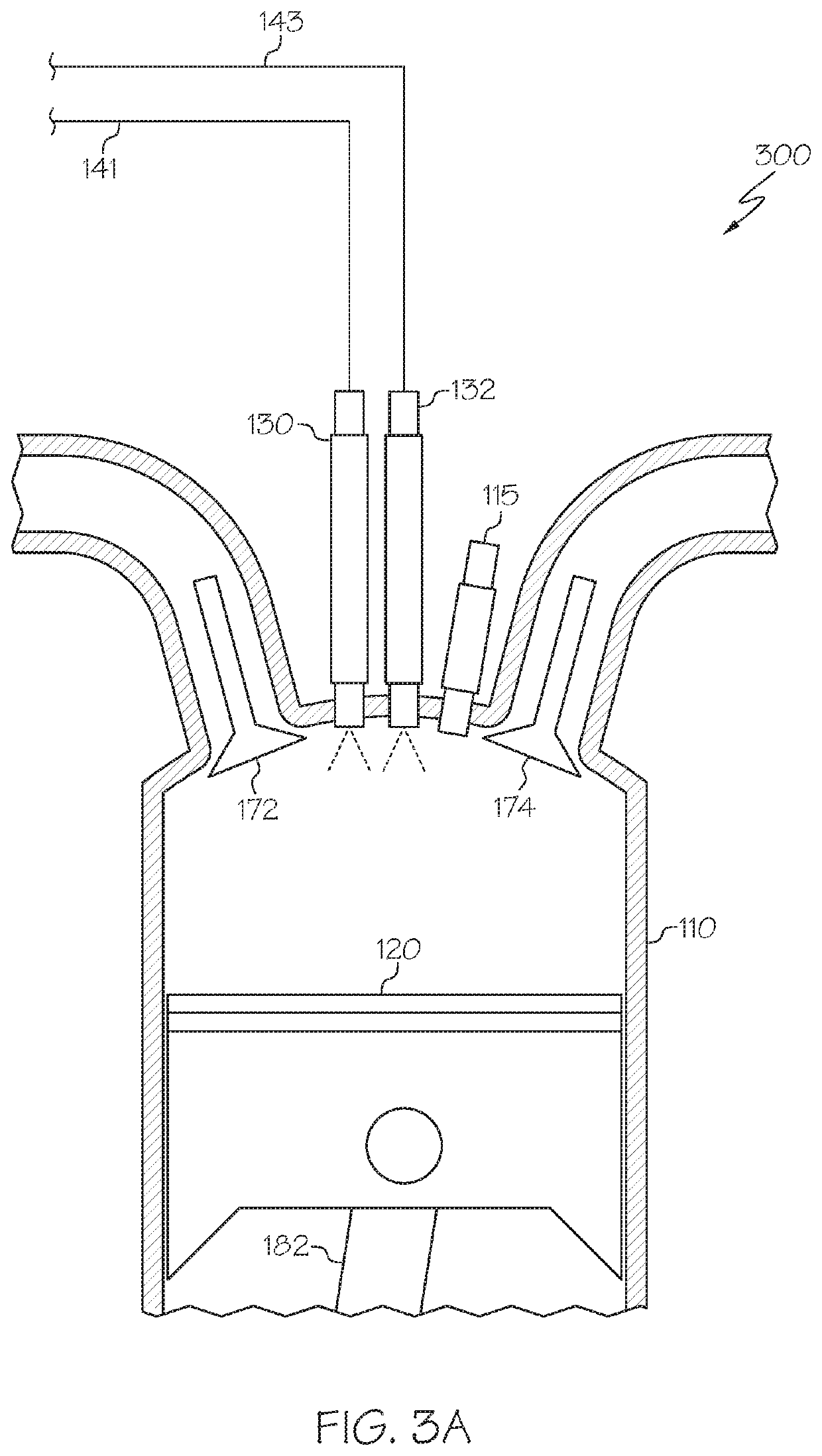Internal combustion engines which utilize multiple fuels and methods for the operation of such
a combustion engine and fuel technology, applied in the direction of machines/engines, automatic control of ignition, electric control, etc., can solve the problems of carbon dioxide entering the environment, and achieve the effects of less fuel consumption, less fuel consumption, and reducing knocking
- Summary
- Abstract
- Description
- Claims
- Application Information
AI Technical Summary
Benefits of technology
Problems solved by technology
Method used
Image
Examples
example 1
[0048]An engine system running at 2500 rpm and 13 bar was analyzed at varying CA50 with ethanol and gasoline utilized as the high octane fuel and the low octane fuel, respectively. The gasoline utilized in the examples was a Saudi Arabian Gasoline Blendstock for Oxygenated Blending (BOB) having a RON of 90. For the engine of Example 1, the maximum brake torque was measured as about 8 degrees aTDC (after top dead center).
[0049]The engine was analyzed at CA50 greater than 8 degrees to determine the required amount of high octane fuel required to prevent knocking at a given CA50. FIG. 4 depicts the weight ratio of methanol needed in the engine at varying CA50 for knock prevention. The methanol fraction was indirectly established based on the minimum octane requirement of the engine at a given combustion phasing. That is, knocking would occur with any less methanol at a given CA50 shown in FIG. 4. For this operating condition, the octane requirement at the most retarded combustion phasi...
example 2
[0054]Further testing was conducted on the engine and conditions of Example 1, but the engine load was varied at 18 bar, 16 bar, 13 bar, 11 bar, and 8 bar and the engine ran constantly at 1500 rpm. MBT at CA50 of about 8 degrees could be maintained at all loads below this level with the engine operated on only the gasoline (that is, without octane enrichment by the high octane fuel). FIG. 8 shows the average peak pressure as a function of CA50 past maximum break torque or the cylinder pressure limit (if relevant). Additionally, FIG. 9 shows the change in methanol fraction as a function of CA50, again standardized to degrees past maximum break torque or the cylinder pressure limit (if relevant). The trade-off between thermal efficiency and fuel energy density is enabled by the relationship between the combustion phasing and the peak cylinder pressure. Retarding the combustion phasing reduces the peak cylinder pressure, which effectively lowers the octane requirement of the engine. Th...
example 3
[0055]An engine utilizing methanol and gasoline and running at 1500 rpm under varying engine loads (18 bar, 16 bar, 13 bar, 11 bar, and 8 bar) was experimentally analyzed at varying CA50 values, where methanol content in the fuel mixture was minimized to the amount needed to prevent knocking. FIG. 10 shows the methanol fraction as a function of CA50 for the various engine loads, and FIG. 11 shows the net specific fuel consumption of the fuel mixture as a function of CA50 for the various engine loads.
PUM
 Login to View More
Login to View More Abstract
Description
Claims
Application Information
 Login to View More
Login to View More - R&D
- Intellectual Property
- Life Sciences
- Materials
- Tech Scout
- Unparalleled Data Quality
- Higher Quality Content
- 60% Fewer Hallucinations
Browse by: Latest US Patents, China's latest patents, Technical Efficacy Thesaurus, Application Domain, Technology Topic, Popular Technical Reports.
© 2025 PatSnap. All rights reserved.Legal|Privacy policy|Modern Slavery Act Transparency Statement|Sitemap|About US| Contact US: help@patsnap.com



